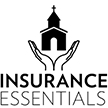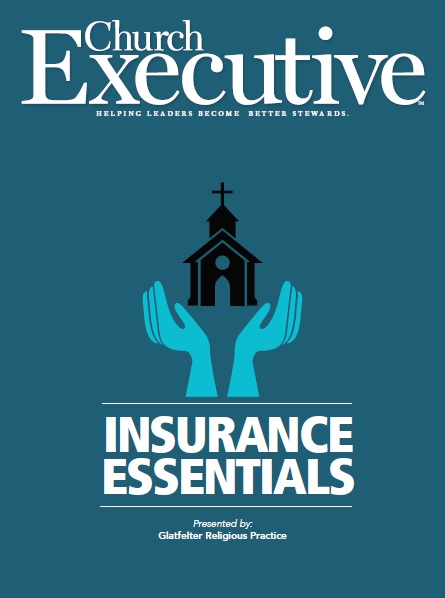
Red flags and best practices to better protect your religious organization
They’re on the news on a regular basis: stories of church theft, fraud and embezzlement.
 Sometimes the culprit is the church accountant who intentionally misrepresents church spending. Sometimes it’s the church food pantry director, who purchases food for the church — and $30,000 in Visa gift cards over time. Sometimes it’s an outside thief who breaks into the building and takes irreplaceable art or books. And sometimes it’s even the admired pastor himself.
Sometimes the culprit is the church accountant who intentionally misrepresents church spending. Sometimes it’s the church food pantry director, who purchases food for the church — and $30,000 in Visa gift cards over time. Sometimes it’s an outside thief who breaks into the building and takes irreplaceable art or books. And sometimes it’s even the admired pastor himself.
While it’s unpleasant to think about these occurrences, it’s important to be aware of their ever-increasing likelihood, and to help protect your church and congregation from suffering similar experiences. According to the Association of Certified Fraud Examiners, it’s easy to be unaware of the large rate of fraud in churches. Statistically, these happenings are rarely made public.
If theft and fraud are larger issues than we’re aware of, what can be done to prevent them from occurring within our own congregation?
First, you need to understand the potential risks of church crime — and then watch for red flags that might indicate something is wrong. It’s about supporting your increased awareness with a few best practices.
Theft red flags
Single-person control: Church budgets, collections and spending should incorporate multiple layers of oversight. Financial-based tasks should never be completed by a single individual. If someone is pushing to make this the case or is working to ensure that they have time alone with church funds, investigate.
Too much interest in items: It’s common for churches to own beautiful and historical paintings, sculptures and books. If someone asks too many questions about any of these items, or lingers in areas after everyone else has left, ensure that they are observed or accompanied.
Careless counting: Have multiple financially experienced church personnel, along with a vestry member or secretary of finance, check bank statements and watch for spending irregularities. If you’re able, look into scheduling routine outside audits, as well. These can help you catch spending that might otherwise go unnoticed.

Always-open entryways: Open-door policies are part of many welcoming parishes, but it’s important to balance this out with a focus on safety. To understand the threats and hazards typically faced by your religious organization, consider completing a security vulnerability assessment and developing a team of trained staff and volunteers to oversee areas of concern.
Fraud-prevention best practices
Schedule a site assessment. A quality church site assessment will evaluate the safety, accessibility and emergency preparedness of the building, grounds and staff. It will look at all access points, visibility areas and more. It can also identify potential threats and hazards. If you have too many open access points or not enough visibility in certain areas that could encourage theft, it should be addressed during this assessment.
Put it in writing. Develop a written safety and security plan, which should fully address things like selecting and designating security coordinators, team member responsibilities, role of contracted security help (when applicable), procedures for properly securing buildings and limiting access, and security camera footage.
Train everyone. After developing a formal written plan, it is critical that everyone within your church’s community, from staff to volunteers and congregation members, receives training on all procedures. Keeping everyone on the same page about rules and procedures is important. In addition, this comprehensive training encourages a culture of open communication and transparency across your organization.
Ensure that trust is earned. When new employees and volunteers join your church, screen them carefully. After they are hired, observe them carefully. Watch receipts closely, and be sure that trust is earned rather than given.
Even people we think we know can commit fraud or theft, embezzle funds, steal church supplies or valuables, and pad expense accounts. Outsiders can sell bogus services, overcharge for materials, or break and enter. Putting careful procedures into place before these things happen can help to save your church from sizable losses. It’s important to band together to watch for red flags, exercise best practices, and keep communication open so that, all across your parish, others do the same. These simple, small tasks can go a long way to protecting your church and its fellowship.
For more information on keeping your facility and members safe, visit glatfelterreligiouspractice.com/Safety-Central or take a peek at Glatfelter’s Passion Project blog.
Elizabeth Norman, BSN, MBA, CPHRM, is the director of risk control services at Glatfelter Religious Practice.


